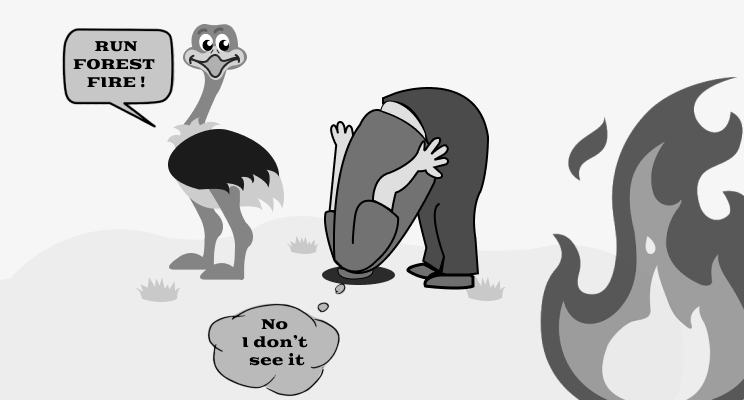Introduction
In the realm of decision-making, humans are often influenced by various cognitive biases that can lead to irrational choices. One such bias is the Ostrich Effect, which refers to the tendency to avoid or ignore information that may be unsettling or inconvenient. Just like an ostrich burying its head in the sand to escape danger, individuals exhibiting the Ostrich Effect engage in willful ignorance, hoping that avoiding the problem will make it disappear.
The Ostrich Effect in Decision-Making
The Ostrich Effect has profound implications for decision-making processes in a variety of contexts. It stems from our natural inclination to seek emotional comfort and maintain the status quo, rather than confront uncomfortable or distressing realities. By ignoring crucial information, individuals unwittingly jeopardize their best interests and fail to make informed choices.
Anchored in Human Psychology
The prevalence of the Ostrich Effect can be attributed to several psychological factors. One key factor is the desire to maintain a positive self-image and avoid cognitive dissonance, which occurs when one’s beliefs and actions are inconsistent. People tend to ignore information that challenges their preconceived notions or threatens their self-esteem, leading to a biased perception of reality.
Examples of the Ostrich Effect
- Personal Life Decisions: Consider a person who suspects they have a health issue but avoids visiting the doctor due to fear or denial. By disregarding the symptoms and delaying medical intervention, they endanger their well-being. The Ostrich Effect in this case arises from the desire to maintain a sense of control and avoid the potential negative outcomes associated with a medical diagnosis.
- Business Scenarios: In the business world, the Ostrich Effect can manifest when leaders disregard warning signs of impending disruption or market shifts. Kodak’s reluctance to embrace digital photography is a prime example. Despite being aware of the emerging technology, the company chose to stick with its traditional film-based business model. This refusal to acknowledge the changing landscape ultimately led to Kodak’s decline.
- Public Policy-Making: The Ostrich Effect can also influence public policy decisions. When faced with complex and challenging issues, policymakers may shy away from confronting uncomfortable truths or unpopularity. Climate change is a pertinent example, with politicians sometimes neglecting or downplaying the scientific consensus on the issue due to potential economic and political ramifications.
Psychological Underpinnings and Interplay with Other Biases
The Ostrich Effect can be reinforced by several mental biases. Confirmation bias, for instance, causes individuals to seek information that confirms their existing beliefs while discounting contradictory evidence. The sunk cost fallacy can also contribute, as people may choose to ignore negative information to justify the investments they have already made.
Additionally, the availability heuristic plays a role in the Ostrich Effect by influencing our reliance on easily accessible information. If unpleasant or inconvenient facts are less readily available in our memory, we are more likely to disregard them in decision-making processes.
Identifying and Overcoming the Ostrich Effect
To avoid succumbing to the Ostrich Effect, it is essential to cultivate self-awareness and actively seek out diverse perspectives. Here are some practical strategies to consider
- Embrace Discomfort: Recognize that discomfort and cognitive dissonance are natural components of growth and learning. By acknowledging and confronting uncomfortable information, you can make more informed decisions.
- Foster Open-Mindedness: Cultivate a willingness to entertain opposing viewpoints and actively seek out diverse sources of information. Engage in critical thinking and challenge your own assumptions to broaden your perspective.
- Seek Feedback: Actively seek feedback from trusted individuals or experts in relevant fields. Encourage them to provide constructive criticism and alternative perspectives to ensure you consider all available information.
- Pause and Reflect: Before making important decisions, take the time to step back, analyze the situation objectively, and consider the potential consequences of ignoring pertinent information.
Conclusion
The Ostrich Effect presents a significant challenge in decision-making, but awareness and active avoidance of this mental trap are essential for making sound judgments. By understanding the psychological factors that contribute to this bias and employing practical strategies, individuals can overcome the Ostrich Effect and make more informed choices. Embracing discomfort, fostering open-mindedness, seeking feedback, and engaging in reflective thinking are valuable tools for navigating the complexities of decision-making in both personal and professional spheres. By recognizing the perils of willful ignorance, we can strive for better outcomes and more rational decision-making processes.
